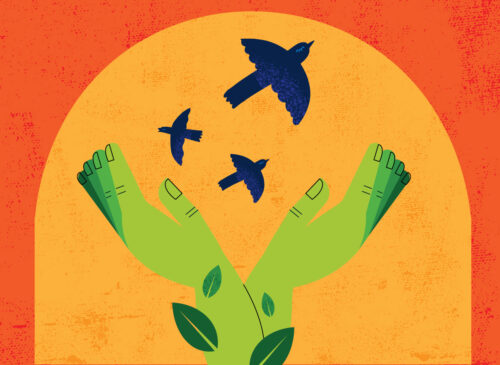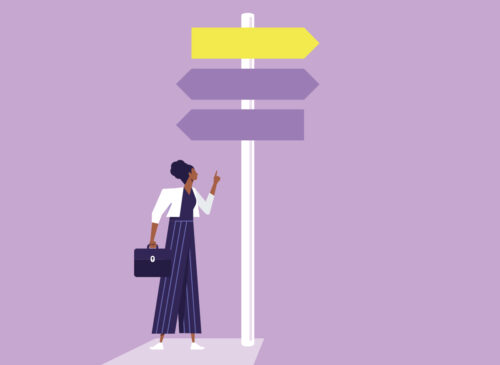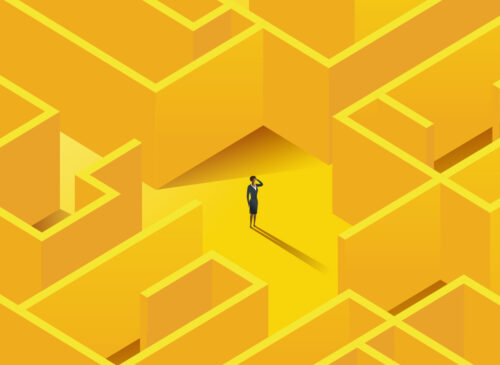As universities take on the work of Indigenization, what role do faculty and faculty associations have in advancing the recommendations of the Truth and Reconciliation Commission’s Final Report and the rights of their Indigenous members?

What is a faculty association to do?
It has been just over three years since the Truth and Reconciliation Commission (TRC) issued its final report and 94 Calls to Action. Since then, the term “Indigenization” has increasingly been on the tongue of Ontario’s university administrators and professors. However, the province’s faculty associations have been slow to take up the call.
Much of the hesitation is caused, no doubt, by a fear of getting things wrong, of making matters worse. Fair enough. Both “reconciliation” and “Indigenization” are fraught terms with complicated histories. Moreover, efforts to Indigenize postsecondary institutions often take the form of what Adam Gaudry and Danielle Lorenz term “Indigenization as inclusion”—that is, Indigenization aimed at supporting the adaptation of Indigenous students and employees into a settler-colonial university that remains largely unchanged by their presence. Even when well intentioned, Indigenization as inclusion puts the onus on Indigenous people. And, if the TRC taught us anything, it is that settler-colonial institutions, not Indigenous people, are the ones that should be doing things differently.
Both “reconciliation” and “Indigenization” are fraught terms with complicated histories.
Against the background of centuries of anti-Indigenous racism and universities that are slow to change, what is a faculty association to do?
In 2017, a small group of mostly non-Indigenous faculty and staff within the Faculty Association of the University of Waterloo (FAUW) (including FAUW Vice-President Shannon Dea and FAUW Community Relations Coordinator Laura McDonald) started working together to try to answer this question in small, manageable, but meaningful ways. Earlier the same year, Lori Campbell had been appointed Director of Shatitsirótha’ Waterloo Indigenous Student Centre (WISC). The FAUW team connected with Lori to ensure that she thought they were more or less headed in the right direction. By late 2018, this group had made enough progress that Lori, Shannon, and Laura started to offer advice to other Ontario faculty associations about actions they could take in response to the TRC’s report and recommendations.
This article introduces readers to some of that advice, some of the reasons for the advice, and some examples of things that have worked at the University of Waterloo. There are two voices in this article. The article is primarily written in the voice of the group, reflecting the character of our ongoing collaboration. However, in places Lori’s voice emerges alone. Lori is the only Indigenous co-author of this article and the person who has been doing this work the longest. At various points in this article, Lori speaks and Shannon and Laura “stay in their lane” and listen.
We offer four overarching pieces of advice for faculty associations who wish to take on reconciliation, Indigenization, or decolonization:
- Get uncomfortable,
- Do the work,
- Establish relationships,
- Teach (and learn from) the right people.
Getting started
A thread that runs through this advice is that people need to start from where they are. For some people, that will mean starting slowly and carefully recognizing that many people—especially Indigenous people—have been doing this for a long time. Here is Lori’s starting point:
Lori: I am a Two-Spirit nehiyaw apihtawikosisan iskwew from Treaty 6 territory in kīwetinohk kisiskaciwan with matrilineal ties to moniyawi-sakahikanihk.
When I started university in Regina in 1991, I found the Saskatchewan Indian Federated College, now the First Nations University of Canada. When I walked in and saw Indigenous faculty members, administrators, and students, and heard the languages being spoken, it was like a homecoming. I often say that I spent kindergarten to Grade 12 learning about who I was from a family and a community and an education system that had no idea who I was. But when I walked in those doors for the first time, people knew who I was and how I came to be there. That was the first time I felt something like that. It would continue to take many years to really find out—and to feel a connection with—who I was and where I came from.
The reason that I work in education is a result of that experience I had when I was 19 years old and walked into the university. I saw the value of our education system and the impact that it can have—that it had on me and on the other students.
From my perspective as an Indigenous person and as I have learned from my Elders and relatives before me, Indigenization is not new. Indigenous people have been working to Indigenize these institutions since they were first established. The newness is that non-Indigenous people are now coming to the table to take up their part in the work. My Elders, teachers, and aunties were doing this work before me, and I need to honour that they were in these hard places at a time when they were the only ones.
Indigenization is not new. Indigenous people have been working to Indigenize these institutions since they were first established.
Anyone in my role knows the stories of when we first entered these spaces—of having a sort of broom closet in the basement of the university where students could sneak in and come see us. Now we have reached the point where we are at least no longer in the basement, and have windows that let daylight in.
I also want to note that my Elders have specifically asked that those of us in positions like mine, with access to venues like Academic Matters, should make sure to let people know that we do not want non-Indigenous people to view Indigenous stories as narratives of trauma, victimization and pain. Our stories and lived experiences are those of survival and the undeniable strength of our Indigenous ancestors.
Get comfortable with the uncomfortable
Lori: So first—get comfortable with the uncomfortable. I know that this kind of work is awkward. I used to facilitate conversations with a settler colleague back when I was working at Saskatchewan Polytechnic and we called them “Awkward Conversations”; we would invite people for coffee to have awkward conversations. Awkward, uncomfortable, messy, I mean, that is all OK. In fact, it is necessary. If we are not going to push ourselves to be a little bit uncomfortable, then we are probably not really doing the work and, to be honest, I think being comfortable is what has led us into this mess.
We do work like this together under the assumption that everybody doing this work wants to learn, wants to engage, wants to share, and is coming from a good place. You may get words wrong; that is OK. There is a lot of learning for all of us to do.
There is a lot of learning for all of us to do.
Among the non-Indigenous FAUW faculty and staff who are working on Indigenization, this theme of being uncomfortable seems to capture everyone’s starting point. Laura first connected with the University of Waterloo’s Indigenous community by attending WISC’s weekly soup lunches. While it felt awkward at first, she kept going and got to know the staff members who work at WISC and the students and non-Indigenous people who attend regularly. Eventually, she started to help wash dishes, and then suggested that FAUW join the rotation of campus groups making soup. Several of the folks at FAUW who are working on Indigenization tell similar stories about having to get up the nerve to start visiting WISC and making those connections outside of their comfort zones.
For most of us, the willingness to get uncomfortable is a crucial first step. Much of this discomfort comes from a fear of making mistakes. But, as an Indigenous student told Shannon, non-Indigenous people have a long history of making mistakes when it comes to Indigenous people. This fear of making mistakes is not exactly fear of the unknown.
De-centring settlers without burdening Indigenous folks
For FAUW, the mistakes that non-Indigenous people make are front and centre because the majority of its members and staff are non-Indigenous. FAUW represents about 1,400 faculty members. Among these, we know of only two who are Indigenous. In addition to these professors, Waterloo employs a handful of Indigenous sessional instructors, but they are not represented by FAUW. None of FAUW’s staff are Indigenous. Waterloo is pretty typical in this regard. According to recent Statistics Canada data,
1.4 per cent of professors and 1 per cent of PhD students across Canada are Indigenous. (It is worth noting that not all non-Indigenous faculty are white. For the purposes of this article, we primarily use the term “non-Indigenous”, but we recognize that it does not quite capture the relational significance that different non-Indigenous groups have to settler colonialism.)
One of the big challenges that inspired FAUW’s creation of its Indigenization Working Group was to help non-Indigenous faculty support Indigenization in meaningful ways, without either appropriating Indigenization from Indigenous people or placing additional burdens on overworked Indigenous colleagues and community members. As Lori stated, it is time for non-Indigenous people to join in the Indigenization work Indigenous people have been doing for generations. So, how could we help our members get it right?
This is a serious issue. As non-Indigenous faculty become attuned to the injustices and trauma experienced by Indigenous people, they frequently try to help by inviting Indigenous speakers into their classes, by contacting WISC (or their local equivalent) for advice and information, or even by assigning their students to consult with WISC staff about course assignments. In this way, non-Indigenous consciousness-raising ends up making more work for Indigenous folks who already have too much work to do. Moreover, it is boring work! Indigenization 101 is interesting and new to many non-Indigenous academics, but it is old hat for Indigenous people.
FAUW’s Indigenization Working Group follows three guiding principles:
- Help non-Indigenous faculty members take baby steps,
- Do not add to the burden on Indigenous faculty and staff,
- Stay in our lane. (That is, do not assume we know what the Indigenous community needs; do more listening and less talking.)
We have already talked about getting uncomfortable. Here is how the other three pieces of advice we listed above intersect with these guiding principles:
Do the work
Making change takes work. Indigenous people should not have to do any more of the work than they are already doing. FAUW therefore seeks ways we can take on some of the work. Some of this work supports non-Indigenous faculty better understanding their role in Indigenization and some of the work is aimed at supporting (rather than burdening) the Indigenous community. We have provided structure and incentives for faculty members to work together on online courses related to Indigenization. We also read what Indigenous scholars have to say about Indigenizing the postsecondary system and teach our colleagues about what we have learned through blog posts, reading circles, and resource pages. Other things we have done include providing soup and labour for WISC’s soup lunch from time to time, raising money for a fund to support Indigenous student leaders, and funding an Indigenous colleague to attend a conference.
Establish relationships
Many professors do a lot of solitary work. One of the striking things about the work the FAUW Indigenization team has been doing is how grounded it is in relationships. Whether we are meeting to talk about a course or an article about Indigenization, or rolling up our sleeves at the soup lunch, most of the work we do is done with other people. This reflects the Indigenous emphasis on community and relationships.
While FAUW is careful not to add to our Indigenous colleagues’ workloads, we also make sure to touch base regularly with Indigenous colleagues and community members to make sure that we understand what they need and that we are engaging in useful work. Too many Indigenization efforts end up allowing non-Indigenous folks to feel like they are helping when the opposite is true. Lori and the FAUW team have built up a trusting relationship that allows us to check in regularly to ensure we are getting it right.
Of course, one of the most important relationships is with the land. FAUW now starts its events with land acknowledgements. But a land acknowledgement should not be a rote recital. It should be done, as Indigenous folks sometimes say, in a good way with a good mind. To that end, we offer blog posts and tip sheets about land acknowledgement practices, including the complexities associated with such acknowledgements, and are in the early stages of planning a workshop on the topic.
Lori: I am Cree Métis from Treaty 6 Territory in northern Saskatchewan. The territory that I am from has Indigenous peoples who are very different than the Indigenous groups that have their home in Waterloo. Where I am from, we have the Cree, Saulteaux, Dene, Lakota, Dakota, Nakota, and Métis peoples. It’s very important to follow the protocol of acknowledging the original peoples.
As Indigenous peoples, we have always located ourselves in that sense. There was definitely a long time when, in mainstream settings, we may not have done this in a mixed Indigenous and non-Indigenous group, but I guarantee you that at the first coffee break or the first moment where we had opportunity to get together we were locating ourselves in that way. There is so much that we can learn from doing that. When a speaker acknowledges the territory, there is so much I know about them already. It is also an opportunity to make visible the original peoples of the land, who have been made invisible and marginalized and yet, are the original caretakers of the place. It shows respect for and recognition of Indigenous peoples, both in the past and the present. Because we are still here.
Teach (and learn from) the right people
We previously referred to Gaudry and Lorenz’s research which shows most Canadian universities engaged in Indigenization seek to change Indigenous faculty andstudents, rather than seeking to change the institution. By contrast, FAUW’s working group is aimed at helping non-Indigenous faculty members make small changes to what they know and how they operate. Our primary motivation for focusing on self-education initiatives is that we think it is important for non-Indigenous academics to do the work of learning about Indigenization, rather than imposing on Indigenous people the task of teaching them.
Too often, a non-Indigenous scholar starts their journey by contacting an Indigenous student centre or a senior Indigenous administrator to ask them where to begin. We scholars would never take such an approach in any other scholarly domain. Before we approach a historian or physicist for their expertise, we put the time in to teach ourselves the basics. To seek education from overworked Indigenous colleagues before doing one’s homework disrespects their time and expertise.
That said, it is crucially important that what we are learning comes from an Indigenous perspective. Therefore, we focus on Indigenous scholars, authors, advocates, creators, and organizations in the materials we review and share. Sometimes, of course, we need to learn more directly from Indigenous people themselves. Whether we are consulting with Indigenous students or hosting Indigenous speakers or facilitators, we try to make sure that the work is interesting for them and we compensate them appropriately for their time and expertise.
Putting it all together
We have sketched some general principles that guide our Indigenization work: get uncomfortable, do the work, establish relationships, teach and learn from the right people. And we have suggested that faculty associations dominated by non-Indigenous members ought to work to help non-Indigenous faculty members take baby steps, to avoid adding to the burden on Indigenous faculty and staff, and to “stay in their lane.” Principles are great, but what specific actions flow from them? We conclude with a list of simple things that you may wish to try in your faculty association.
Association actions
Learn
- Host a monthly reading circle
- Host a massively open online course (MOOC) discussion group
Raise awareness
- Include context-specific land acknowledgements on your website, at major events, and at meetings
- Create an Indigenization section in your faculty handbook
- Organize a workshop on land acknowledgements, Indigenizing your syllabus, etc.
- Feature Indigenous faculty and research in newsletters
- Share Indigenous cultural, educational, and academic events with members
Support
- Attend/host soup lunch at your university’s Indigenous centre
- Volunteer to help at Indigenous centre events
- Sponsor Indigenous faculty to attend conferences
Transform
- Build land recognition into collective agreements, constitutions
- Advocate for faculty positions for Indigenous scholars in all academic areas, not just Indigenous Studies
- If enough of your members are Indigenous, provide support and infrastructure for an Indigenous faculty caucus—and listen to their suggestions
Individual actions
- Show up: regularly attend events (and offer to help!)
- Self-educate: read, listen to podcasts and radio shows, watch movies, follow social media accounts, join a MOOC (and host a discussion group!), subscribe to Academica Indigenous Top 10
- Advocate at your university’s senate and board of governors
- Introduce Indigenous authors/content into your courses
- Try to have Indigenous peoples backs on social media
- Know whose land you grew up on (if you grew up in North America) and whose land you now live and work on
- Look up whose land you are visiting when you travel
Want to see more of how FAUW is helping its members respond to the TRC or find resources to help you do these things? Check out its faculty guide page on Indigenization: uwaterloo.ca/fauw/indigenization.










